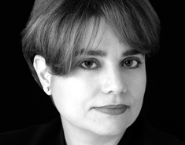Note: This article is from our archives. Some links, images, and text may not be as originally formatted.
by PAT BOSCH, LEED AP
This post first appeared on Perkins+Will’s ideas+buildings blog.
Things are changing in healthcare. Within academic medicine alone, there is a global shortage of healthcare professionals, a changing policy landscape within the United States, and new view and techniques in both pedagogy and practice.

Perkins + Will’s Bosch
In a recent symposium hosted by Perkins+Will, experts in Health Sciences and Education, led by global practice leader Dan Watch, gathered for a deep dive into the evolving world of medical education and allied health/science fields. The group, an interdisciplinary mash-up of physicians, nurses, educators, and designers from the U.S. and Europe, discussed the “once and future” state of academic medicine. The two-day meeting – part exploratory conversation, part passionate call to action – delved into what it will take to properly educate and equip the next generation of health/science professionals in a rapidly changing environment of care and what the implications are for space, resources and sustainable solutions.
Five big ideas arose out of the robust and productive conversation.
1. Global Demand for Health Professionals
The global demand for medicine and allied health professions is exploding in certain parts of the world. It is expected that as the world’s populations increases there will be a demand for over 3 times the number of medical schools around the globe. What does this mean to our ability to research, care and enable practice through smart, sustainable facilities and enabling technology?
2. “Learning is NOT listening – learning is doing…”
The means and methods of medical education that have been in place since the Industrial Revolution are now being called deeply into question – and in many cases supplemented or replaced entirely with active learning and simulation methodologies. More and more emphasis is placed on competency-based measurement and more individualized learning models. Shining a light on outcomes will likely accelerate more transparent and adaptable teaching methods.
3. Education @ The Age of Accountable Care
Shifts in healthcare policy are placing enormous pressure on the care infrastructure. A system more focused on preserving wellness and treatment in outpatient and even virtual settings means that, on the continuum of a care, patients families will ultimately have more responsibility and require more knowledge and training to help their loved-ones.
4. Team-based… EVERYTHING
The model of the physician as the autocratic decision maker and care provider is now in many cases, seen as a vestige of the past. Moving forward teams of doctors, nurses, physician’s assistants, nutritionists, therapists, social workers and pharmacists will work in teams to provide consultative team-based care. Health Science education has already responded to this by creating curricula that is increasingly more team-based and interdisciplinary and interprofessional. Schools of public health, as well as business and management curricula will influence the future health science professionals in education and in practice.
5. If: Health is the Aim → Then: Healthy Materials + Buildings
As we redefine healthcare to deliver wellness, attention must be paid the creation of sustainable, resilient buildings and the elimination of materials known to be harmful and removing them permanently from the building cycle. A powerful cross disciplinary effort that includes physicists, materials scientists – along with healthcare and design professions – can create this sweeping change.
The confluence of change in the US healthcare system along with deep concerns related to global health crises and increased awareness of the danger of climate change create a health science / medical education landscape that is transforming before our eyes. Specialists at Perkins+Will continue to focus and innovate along with far-sighted clients in this volatile and interdisciplinary field of practice.
Attendees at the design firm’s recent Health Sciences and Education symposium discussed how exploding demand, aging demographics, and advancing technology all are converging on a fluid marketplace.
The author is design director of the Miami office for Chicago-based Perkins+Will. She is LEED-accredited with 25+ years of experience specializing in higher education, K-12 schools, science + technology, corporate headquarters, and civic buildings.



Discussion
Be the first to leave a comment.
You must be a member of the BuiltWorlds community to join the discussion.